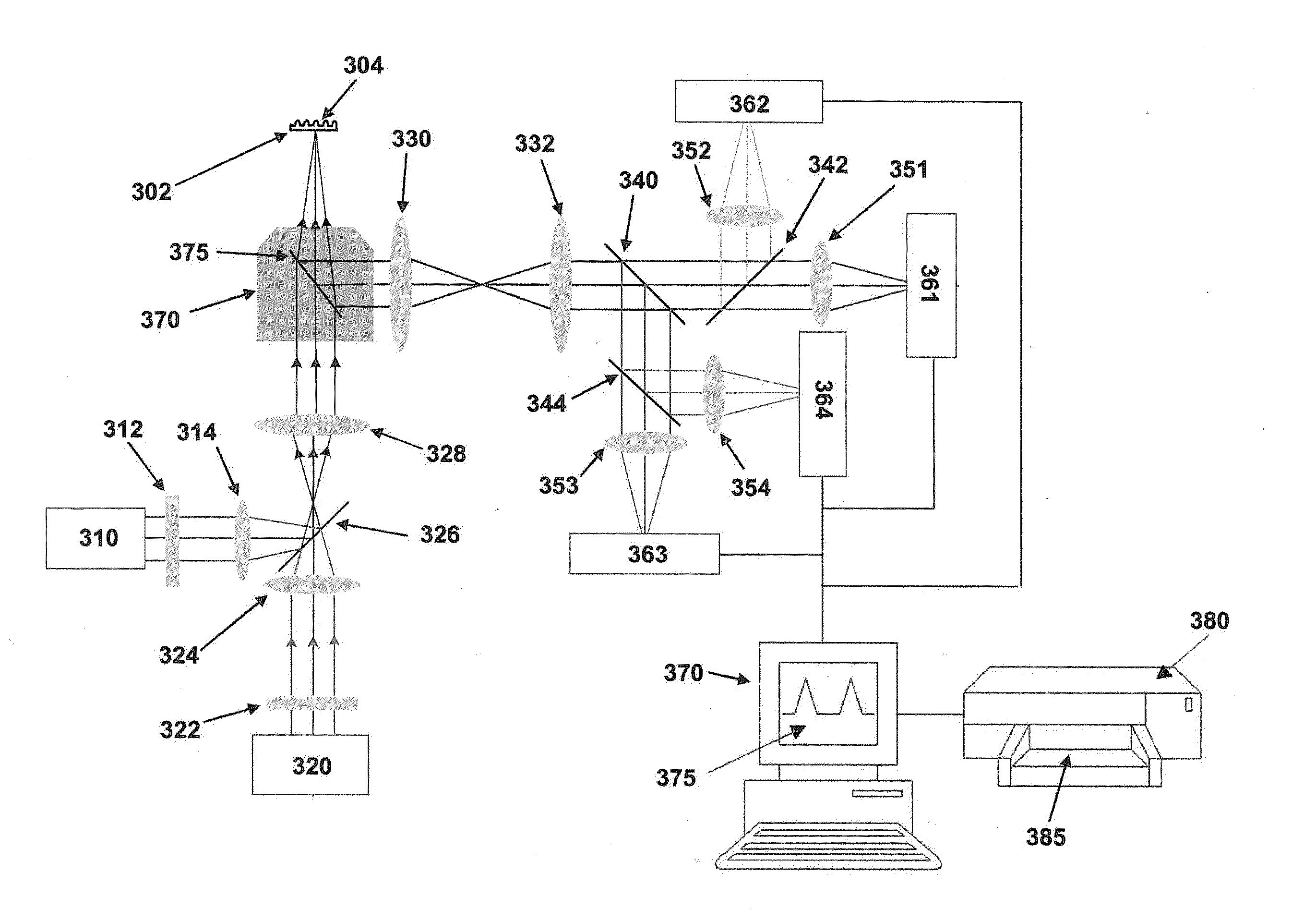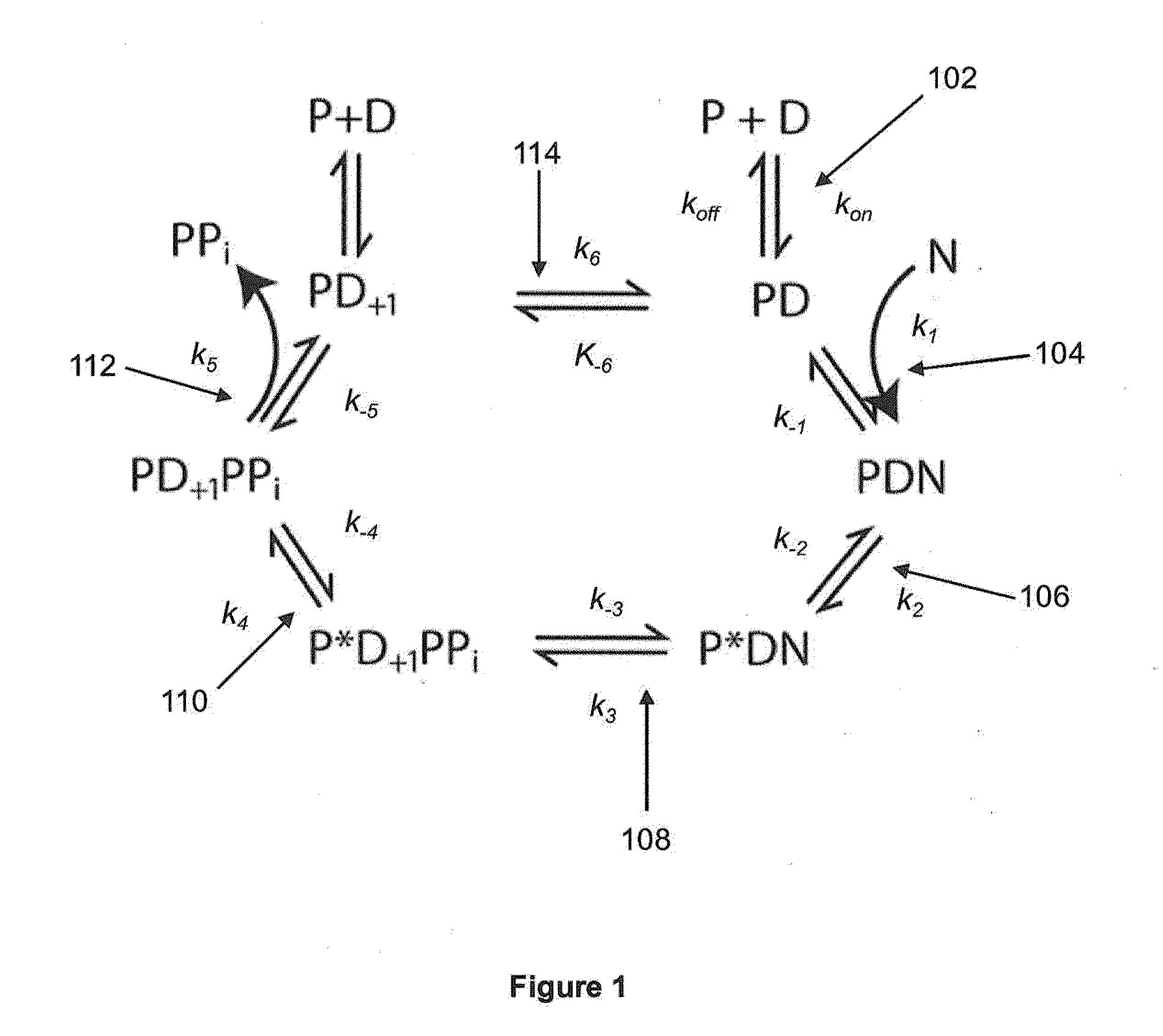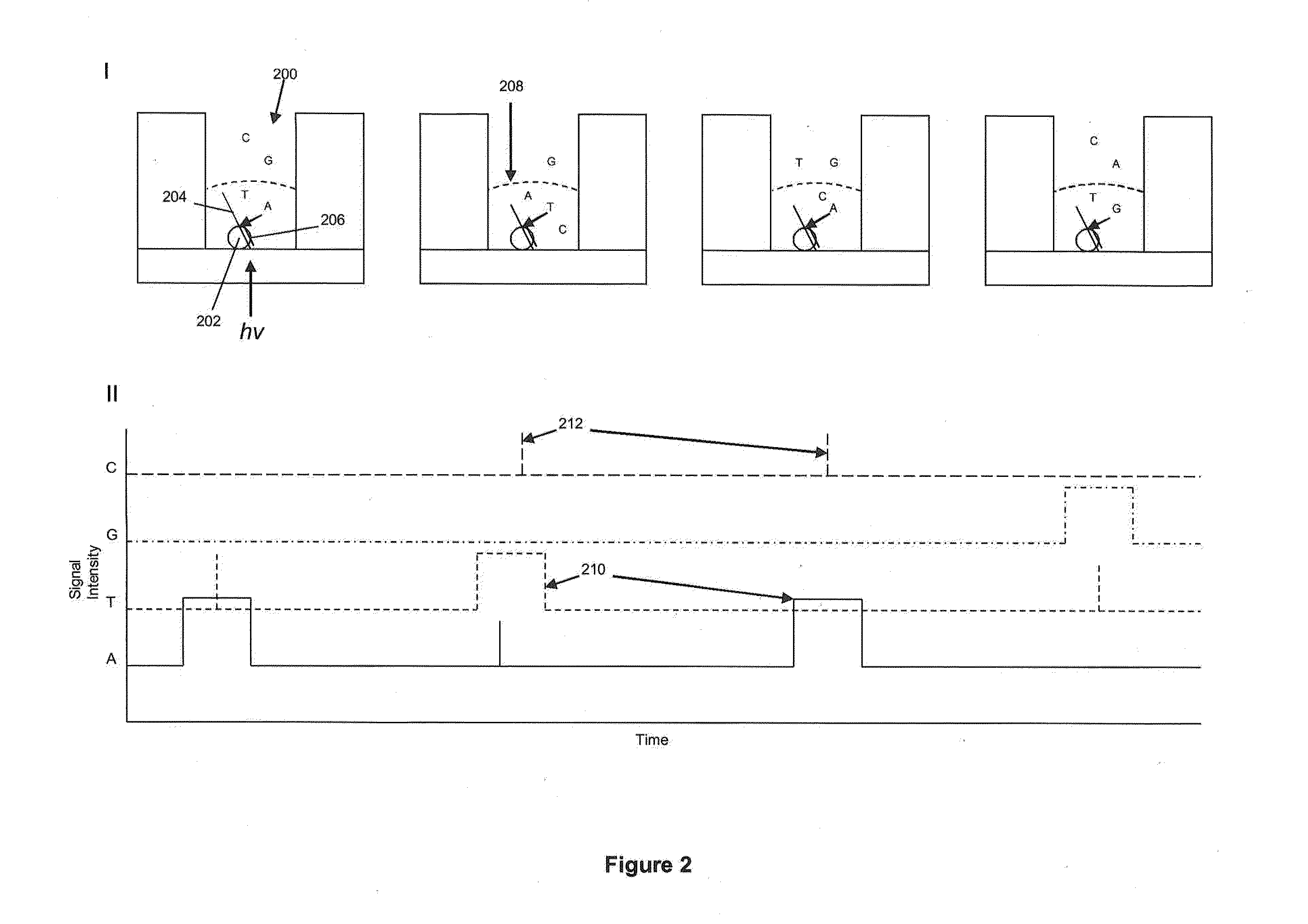Sequencing reactions with alkali metal cations for pulse width control
a technology of alkali metal cations and sequencing reactions, applied in the direction of microbiological testing/measurement, biochemistry apparatus and processes, etc., can solve the problems of time-consuming and extremely costly methods, and achieve the effect of modulating the kinetics of polymerase enzymes and improving sequencing accuracy
- Summary
- Abstract
- Description
- Claims
- Application Information
AI Technical Summary
Benefits of technology
Problems solved by technology
Method used
Image
Examples
example 1
Single-Molecule Sequencing in Zero-Mode Waveguides with Li+
[0138]Sequencing reactions are carried out in a zero-mode waveguide array having 3000 discrete cores. The reactions are observed using a highly multiplexed confocal fluorescent microscope providing a targeted illumination profile, e.g., a separate spot for each core (See, e.g., U.S. patent application Ser. No. 12 / 151,979, filed May 9, 2008, and incorporated herein by reference in its entirety for all purposes). Fluorescent signals from the various ZMWs are detected on an EMCCD camera for 5-7 minutes, and are subjected to pulse recognition and base calling processes (See, e.g., Published U.S. Patent Application No. 2009-0024331, and incorporated herein by reference in its entirety for all purposes). The sequencing was carried out as described in Eid, J. et al., Science, 323(5910), 133-138 (2009) and corresponding supplemental information.
[0139]For each of the sequencing reactions the laser power was 1.25 μW / μm2 and a camera f...
example 2
Single-Molecule Sequencing in Zero-Mode Waveguides with Na+
[0145]Sequencing reactions are carried out as described in Example 1, but various amounts of Na+ were present. Na+ was added in the form of sodium acetate. In one set of experiments, four reactions were carried out, a control with no added Na+, and the other three having 5 mM, 10 mM, and 20 mM of Na+ respectively. Table 3 shows data for pulse width, interpulse distance, read length, and accuracy for a set of sequencing experiments. The pulse width and interpulse distance are shown for each of the four channels corresponding to the four nucleotide analogs.
TABLE 3PW, IPD, Read Length, and Accuracy at various [Na+] concentrations[Na+]PW1PW2PW3PW4IPD1IPD2IPD3IPD4RLAccmMsecsecsecsecsecsecsecsecbases%cntrl0.0880.0840.0800.1090.5840.7680.6020.49357687.1250.1030.0940.0930.1280.5610.7580.5610.48252088.25100.1220.1080.1090.1450.6340.7910.6210.57748488.37200.1500.1270.1290.1660.6130.8850.6160.51748889.09
example 3
Single-Molecule Sequencing in Zero-Mode Waveguides with Na+ and Li+
[0146]The experiments described above show that Li+ and Na+ have similar effects on pulse width, but that the amount of Na+ required for a similar effect is about 40 times higher than the amount of Li+. Single molecule sequencing runs were carried out as described above having both Li+ and Na+, and the experiments showed that Li+ and Na+ can be used together, and that the effects of the two salts together was cumulative.
PUM
| Property | Measurement | Unit |
|---|---|---|
| Time | aaaaa | aaaaa |
| Time | aaaaa | aaaaa |
| Time | aaaaa | aaaaa |
Abstract
Description
Claims
Application Information
 Login to View More
Login to View More - R&D
- Intellectual Property
- Life Sciences
- Materials
- Tech Scout
- Unparalleled Data Quality
- Higher Quality Content
- 60% Fewer Hallucinations
Browse by: Latest US Patents, China's latest patents, Technical Efficacy Thesaurus, Application Domain, Technology Topic, Popular Technical Reports.
© 2025 PatSnap. All rights reserved.Legal|Privacy policy|Modern Slavery Act Transparency Statement|Sitemap|About US| Contact US: help@patsnap.com



